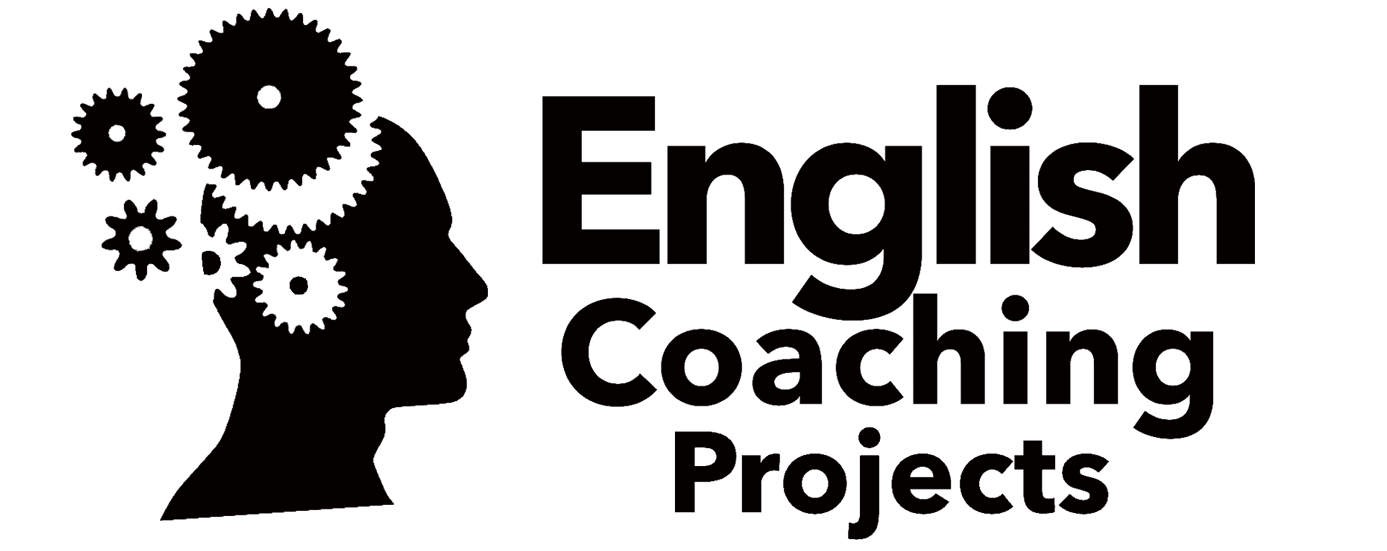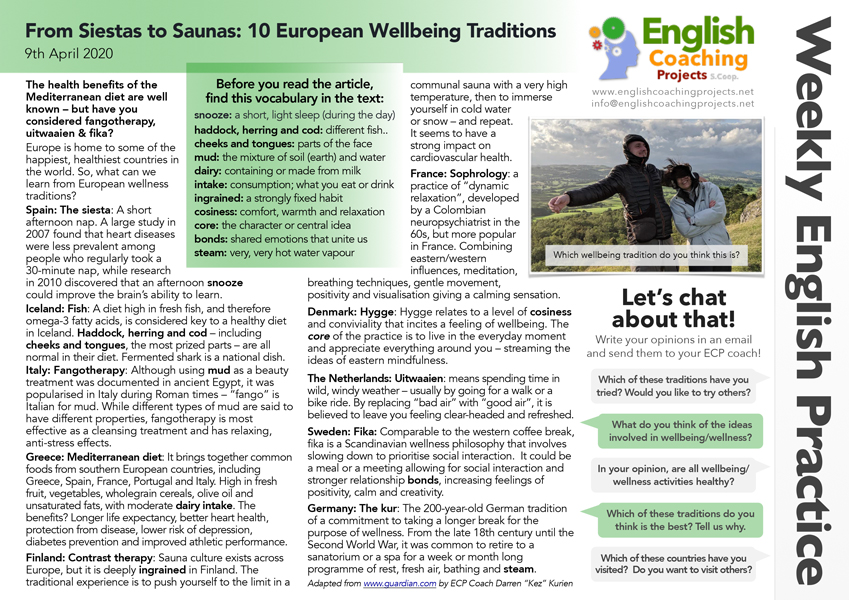Europe is home to some of the happiest, healthiest countries in the world. So, what can we learn from European wellness traditions?
Click on the image to download the pdf
Read and check you understand this vocabulary before you read and listen to the text:
snooze: a short, light sleep (during the day)
haddock, herring and cod: different fish..
cheeks and tongues: parts of the face
mud: the mixture of soil (earth) and water
dairy: containing or made from milk
intake: consumption; what you eat or drink
ingrained: a strongly fixed habit
cosiness: comfort, warmth and relaxation
core: the character or central idea
bonds: shared emotions that unite us
steam: very, very hot water vapour
Listen to the audio (refresh the page if it’s not visible)
The health benefits of the Mediterranean diet are well known – but have you considered fangotherapy, uitwaaien & fika?
Europe is home to some of the happiest, healthiest countries in the world. So, what can we learn from European wellness traditions?
Spain: The siesta: A short afternoon nap. A large study in 2007 found that heart diseases were less prevalent among people who regularly took a 30-minute nap, while research in 2010 discovered that an afternoon snooze could improve the brain’s ability to learn.
Iceland: Fish: A diet high in fresh fish, and therefore omega-3 fatty acids, is considered key to a healthy diet in Iceland. Haddock, herring and cod – including cheeks and tongues, the most prized parts – are all normal in their diet. Fermented shark is a national dish.
Italy: Fangotherapy: Although using mud as a beauty treatment was documented in ancient Egypt, it was popularised in Italy during Roman times – “fango” is Italian for mud. While different types of mud are said to have different properties, fangotherapy is most effective as a cleansing treatment and has relaxing, anti-stress effects.
Greece: Mediterranean diet: It brings together common foods from southern European countries, including Greece, Spain, France, Portugal and Italy. High in fresh fruit, vegetables, wholegrain cereals, olive oil and unsaturated fats, with moderate dairy intake. The benefits? Longer life expectancy, better heart health, protection from disease, lower risk of depression, diabetes prevention and improved athletic performance.
Finland: Contrast therapy: Sauna culture exists across Europe, but it is deeply ingrained in Finland. The traditional experience is to push yourself to the limit in a communal sauna with a very high temperature, then to immerse yourself in cold water or snow – and repeat. It seems to have a strong impact on cardiovascular health.
France: Sophrology: a practice of “dynamic relaxation”, developed by a Colombian neuropsychiatrist in the 60s, but more popular in France. Combining eastern/western influences, meditation, breathing techniques, gentle movement, positivity and visualisation giving a calming sensation.
Denmark: Hygge: Hygge relates to a level of cosiness and conviviality that incites a feeling of wellbeing. The core of the practice is to live in the everyday moment and appreciate everything around you – streaming the ideas of eastern mindfulness.
The Netherlands: Uitwaaien: means spending time in wild, windy weather – usually by going for a walk or a bike ride. By replacing “bad air” with “good air”, it is believed to leave you feeling clear-headed and refreshed.
Sweden: Fika: Comparable to the western coffee break, fika is a Scandinavian wellness philosophy that involves slowing down to prioritise social interaction. It could be a meal or a meeting allowing for social interaction and stronger relationship bonds, increasing feelings of positivity, calm and creativity.
Germany: The kur: The 200-year-old German tradition of a commitment to taking a longer break for the purpose of wellness. From the late 18th century until the Second World War, it was common to retire to a sanatorium or a spa for a week or month long programme of rest, fresh air, bathing and steam.
Adapted from www.guardian.com by ECP Coach Darren “Kez” Kurien
Let’s chat about that!
Write your opinions in an email and send them to your ECP coach!
- Which of these traditions have you tried? Would you like to try others?
- What do you think of the ideas involved in wellbeing/wellness?
- In your opinion, are all wellbeing/wellness activities healthy?
- Which of these traditions do you think is the best? Tell us why.
- Which of these countries have you visited? Do you want to visit others?


